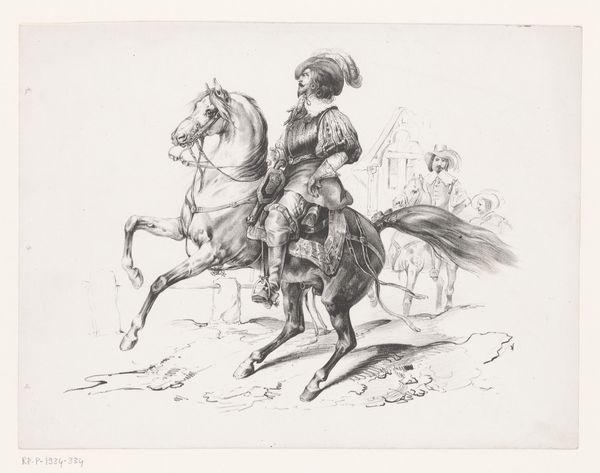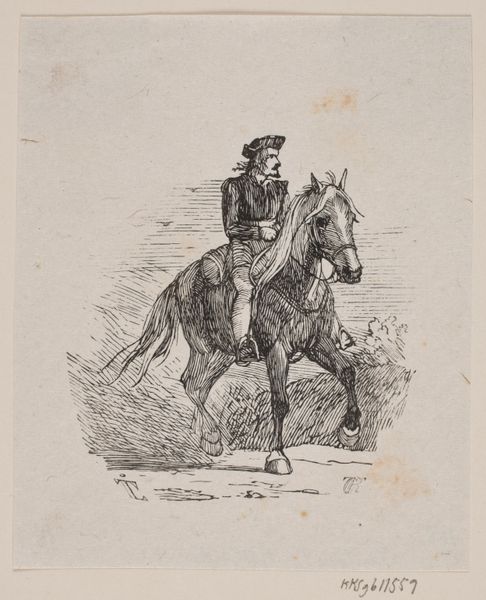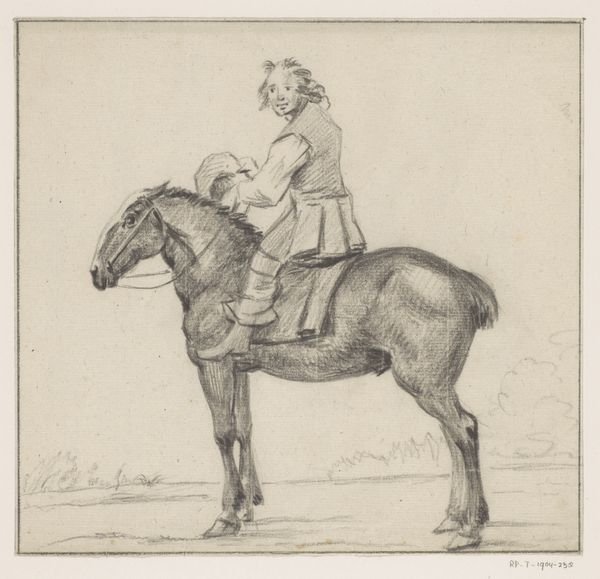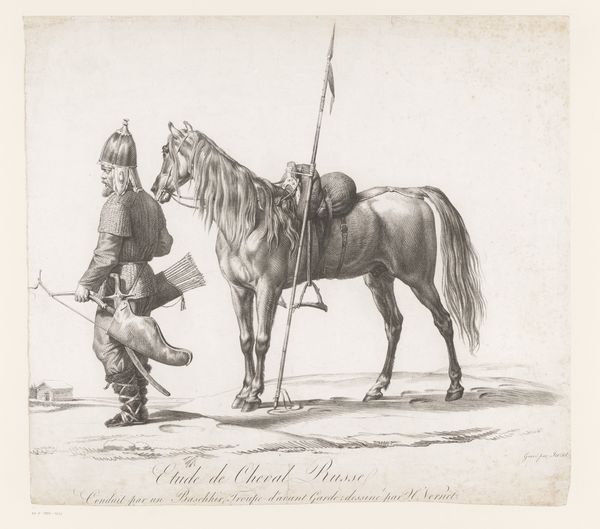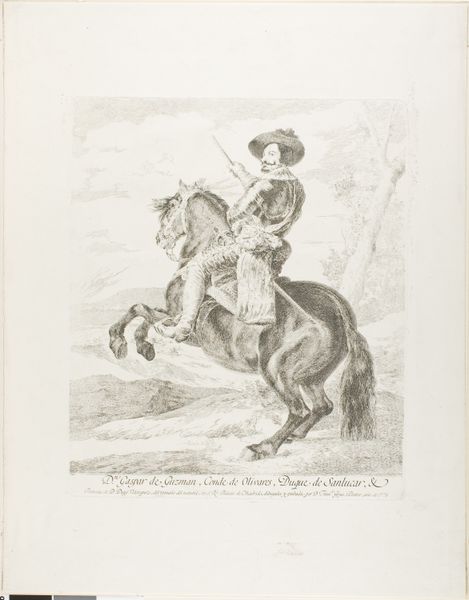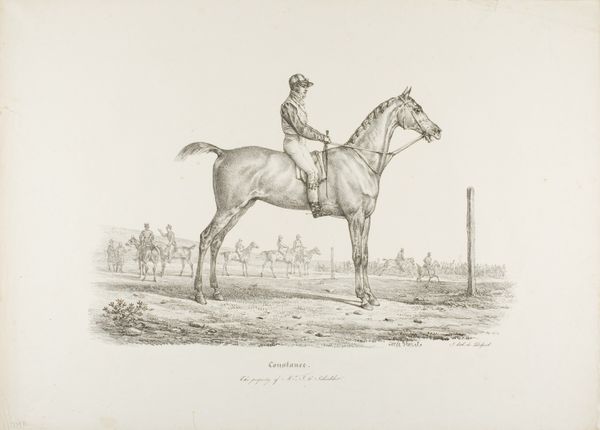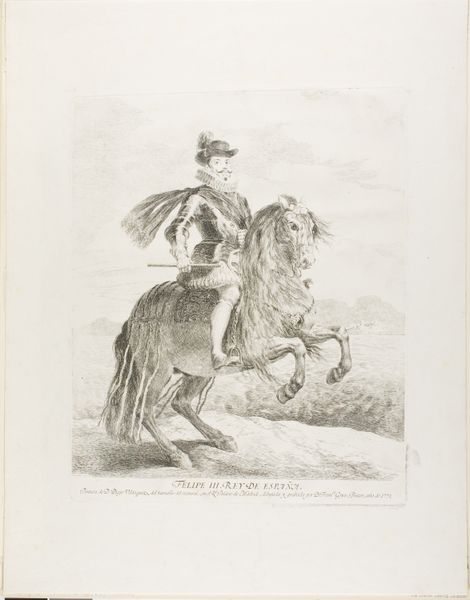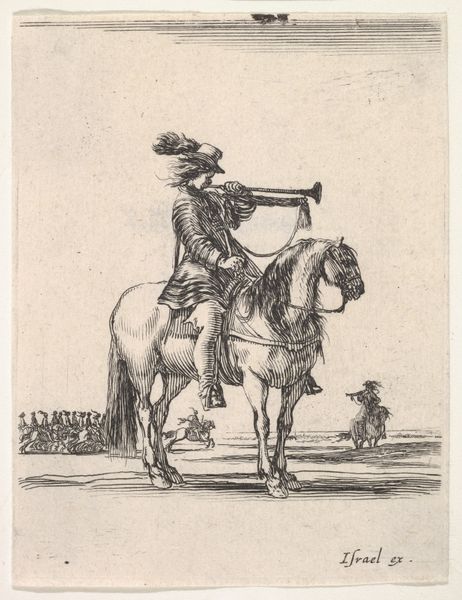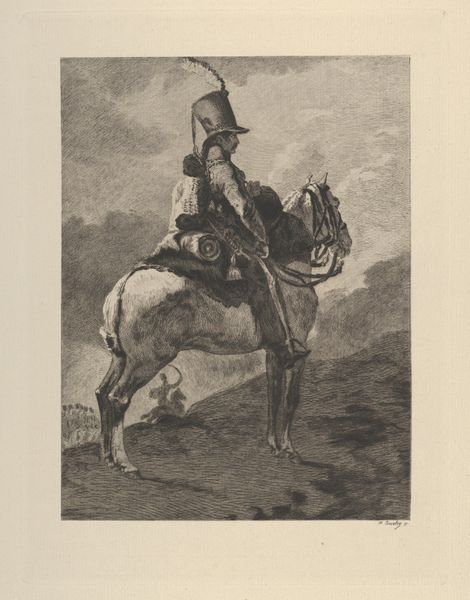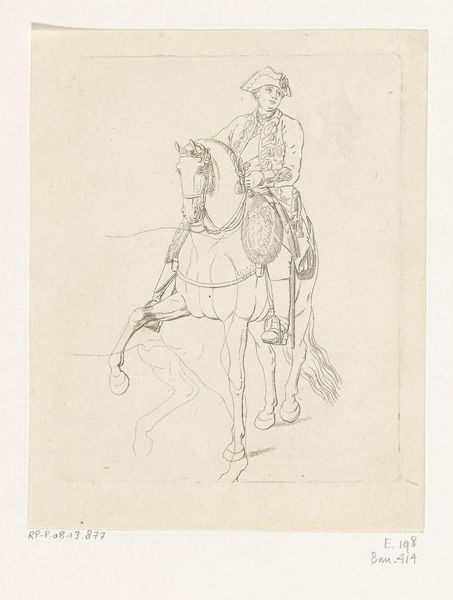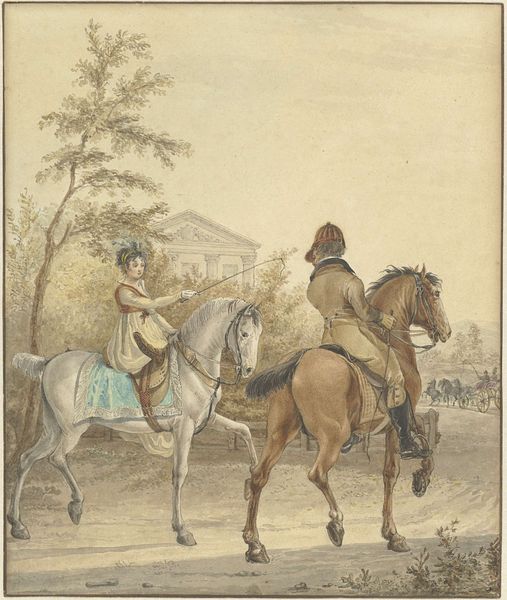
print, engraving
#
portrait
#
neoclassicism
# print
#
figuration
#
cityscape
#
history-painting
#
engraving
#
erotic-art
Dimensions: height 113 mm, width 116 mm
Copyright: Rijks Museum: Open Domain
Editor: Here we have "Napoleon te paard, ca. 1800," or "Napoleon on horseback" by Georges Rouget, made sometime between 1800 and 1869. It's a print, an engraving, actually, residing here at the Rijksmuseum. The engraving gives a somewhat muted, solemn mood. How would you interpret it? Curator: It strikes me as interesting how Rouget is using Napoleon's image, which had, even by this point, already become laden with meaning. The horse, of course, historically, is associated with nobility and power. But observe how it's rendered; not as a fiery steed, but as a composed, almost domesticated animal. What do you think this tamer image of the horse could be communicating? Editor: Maybe it’s about control, taming not just the animal but also the image of Napoleon himself? Subtlety, rather than bombastic showmanship? Curator: Precisely! Notice, too, the city behind him, the suggestion of a wider world he surveys. Do you think it's simply a backdrop or something more symbolic? Editor: It doesn't look particularly grandiose, which I find interesting. The city seems ordinary; suggesting his power comes from his relationship to the everyday, perhaps? Curator: Yes! It's a fascinating interpretation, particularly within the context of Neoclassicism where rulers are often placed within settings suggesting timeless ideals rather than the realities of governance. How does Rouget employ this ideal in his image? Editor: That tension between the classical ideal and, as you say, the realities. I hadn’t considered the interplay so consciously before. Curator: Visual symbols evolve, but it’s precisely in such variations and reinterpretations where their enduring power resides. Editor: Thank you, this really illuminates aspects of the work I hadn't noticed. It gives me a new perspective to continue exploring these types of art pieces.
Comments
No comments
Be the first to comment and join the conversation on the ultimate creative platform.
